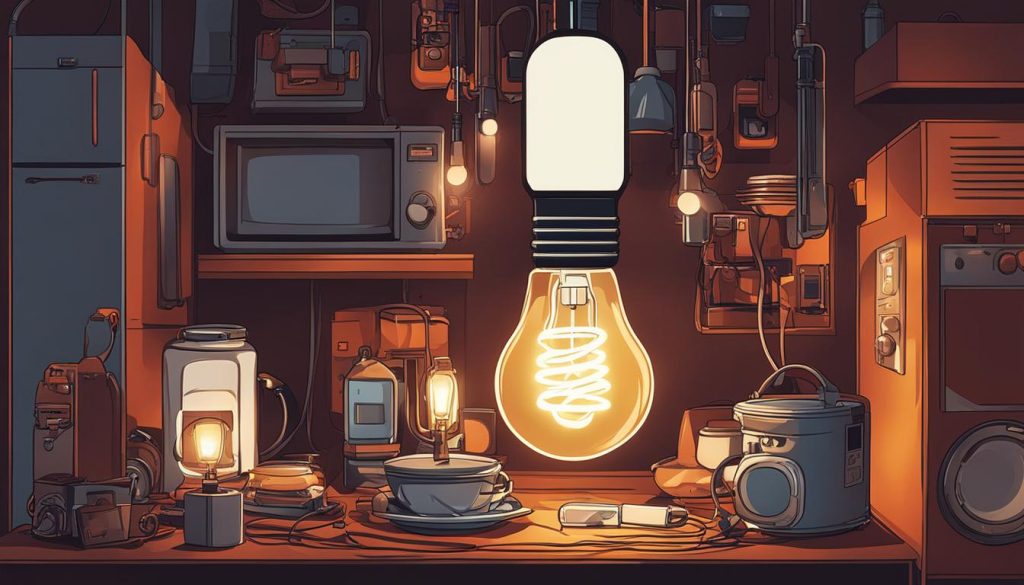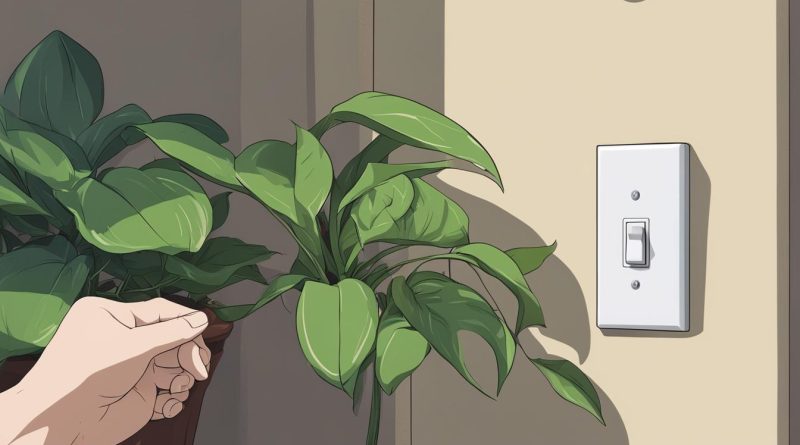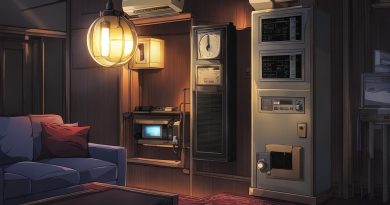Efficient Tips on How to Save Electricity at Home
Reducing energy consumption is not only environmentally friendly but can also save households money on electricity bills. In this article, we will discuss various energy-saving tips and practices that individuals can adopt to conserve electricity and cut costs. By implementing these practices, individuals can contribute to a more sustainable future while also benefiting from reduced energy costs.
Implementing energy-efficient practices can be straightforward and simple, from turning off lights when not in use to optimizing heating and cooling systems. The following are some tips and strategies that individuals can adopt to save electricity:
Key Takeaways
- Reducing energy consumption is eco-friendly and cost-effective.
- Simply turning off lights when not in use is a quick and easy way to save electricity.
- Utilizing energy-efficient light bulbs and power-saving features on appliances can also significantly reduce energy usage.
- Proper insulation, weatherstripping, and utilizing natural ventilation techniques can optimize heating and cooling systems and reduce energy consumption.
- Adopting energy-efficient practices is crucial for a more sustainable and environmentally friendly future.
Energy-Saving Techniques for Lighting and Appliances
Implementing power-saving techniques for lighting and appliances is essential to manage energy costs. Homeowners can considerably reduce energy consumption and conserve electricity by using energy-efficient light bulbs, turning off lights when not in use, and utilizing power-saving features on their appliances.
Energy-Efficient Light Bulbs
Traditional incandescent light bulbs tend to waste a lot of energy in the form of heat, whereas energy-efficient bulbs use less electricity to produce the same amount of light. Switch to LED or CFL bulbs, which may appear expensive initially, but are more cost-effective in the long run as they last longer and save energy.
Lighting Habits
Habits like leaving lights on when not in use or using multiple lights for the same task can quickly add up to increased energy consumption and higher costs. Encourage family members to switch off lights when leaving a room and to use natural light when possible.
Appliance Energy Management
| Power-Saving Features | Description |
|---|---|
| Standby Mode | Allows appliances to conserve energy by using minimal power when not in use. |
| Intelligent Power Management | Automatically adjusts the power usage based on the appliance’s current need for electricity. |
| Energy Star Rating | Appliances with higher energy star ratings are more efficient and use less energy than those with lower ratings. |
Most modern appliances come with power-saving features like standby mode and intelligent power management. Using these features can considerably reduce energy consumption. When purchasing new appliances, choose devices with higher energy star ratings, which are more energy-efficient and cost-effective in the long run.

By adopting energy-saving techniques for lighting and appliances, individuals and households can reduce energy consumption and cut energy costs, contributing to a more sustainable future.
Effective Strategies for Heating and Cooling
Inefficient heating and cooling systems are a significant contributor to high energy consumption. By optimizing these systems, homeowners can reduce energy consumption, save money, and contribute to electricity conservation. Here are some energy-efficient practices that can help:
Proper Insulation and Weatherstripping
Insulation and weatherstripping can help prevent heat loss during winter and heat gain during summer. Proper insulation of walls, ceilings, and attics, as well as weatherstripping of doors and windows, can significantly reduce energy consumption.

Thermostat Settings
Optimizing the thermostat settings is another way to reduce energy consumption. During winter, setting the thermostat to 18˚C (64˚F) during the day and lowering it to 13˚C (55˚F) at night can reduce energy consumption by up to 10%. During summer, setting the thermostat to 26˚C (78.8˚F) during the day and raising it to 29˚C (84.2˚F) at night can have a similar effect.
Natural Ventilation Techniques
Natural ventilation techniques, such as opening windows and using ceiling fans, can help reduce energy consumption by promoting air circulation and reducing the need for artificial cooling systems. During summer, opening windows during cooler times of the day, such as early morning and evening, can help bring in fresh air and cool down the house.
“By implementing these energy-efficient practices, homeowners can reduce energy consumption and conserve electricity.”
Implementing these energy-efficient practices can have a significant impact on reducing energy consumption and promoting electricity conservation. By adopting these strategies, homeowners can help create a more sustainable and environmentally friendly future.
Conclusion
It is evident that by adopting energy-saving habits, reducing energy consumption, and implementing energy-efficient practices, individuals and households can make a significant impact in the effort towards a more sustainable and environmentally friendly future.
By following the tips on how to save electricity, including using energy-efficient light bulbs, turning off lights when not in use, optimizing heating and cooling systems, and utilizing natural ventilation techniques, households can substantially reduce their electricity usage and cut costs.
It is imperative that everyone plays their part in electricity conservation, and by implementing the energy-saving tips and techniques discussed in this article, individuals can make a significant contribution to the global effort to reduce energy consumption and protect the environment.
To sum up, inculcating energy-efficient practices and using electricity responsibly can lead to cutting energy costs, which will make a positive impact on the environment while also benefitting households’ finances.
FAQ
How can I reduce my energy consumption and save electricity at home?
There are several ways you can reduce your energy consumption and save electricity at home. Start by replacing traditional incandescent light bulbs with energy-efficient LED bulbs. Turn off lights and appliances when not in use, and unplug chargers and other electronics that are not actively being used. Use power-saving features on appliances and set your thermostat to an energy-efficient temperature. Additionally, insulate your home properly and seal any drafts to optimize heating and cooling efficiency. These simple habits and practices can significantly reduce your energy usage and cut costs.
Are there any specific techniques for saving electricity when it comes to lighting and appliances?
Yes, there are several energy-saving techniques you can implement for lighting and appliances. Switching to energy-efficient LED bulbs can save a considerable amount of electricity. Additionally, make it a habit to turn off lights when you leave a room and utilize natural daylight when possible. When it comes to appliances, choose energy-efficient models and look for features such as power-saving modes. Unplug chargers and electronic devices when they are not in use to avoid standby power consumption. By practicing these techniques, you can reduce your energy consumption and save on electricity costs.
How can I optimize my heating and cooling systems to minimize energy consumption?
To optimize your heating and cooling systems and minimize energy consumption, start by properly insulating your home. Insulation helps retain heat in winter and keeps your home cooler in summer, reducing the need for excessive heating or cooling. Use weatherstripping to seal any gaps around windows and doors to prevent air leakage. Set your thermostat to an energy-efficient temperature and consider using a programmable thermostat to automatically adjust temperatures based on your schedule. Utilize natural ventilation techniques, such as opening windows during pleasant weather, to reduce the need for artificial cooling. Implementing these strategies will help you lower your energy usage and conserve electricity.




